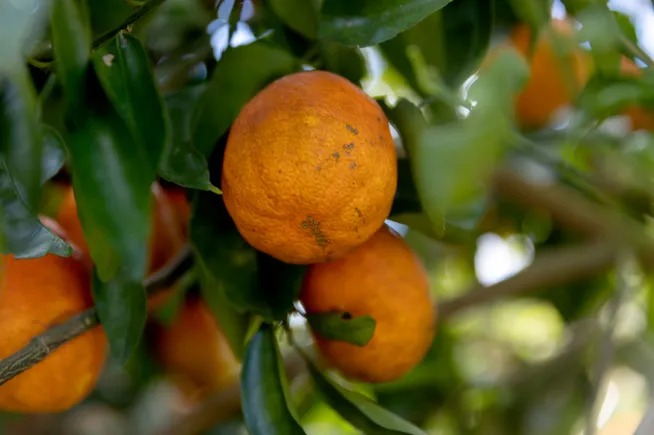Oranges have long been a staple of Florida’s agricultural industry, symbolizing the state’s identity and history. However, the future of Florida’s iconic orange groves is in jeopardy due to the devastating effects of citrus greening, natural disasters, and climate change.
Citrus greening, a bacterial infection spread by the Asian citrus psyllid insect, has ravaged Florida’s orange groves since 2005, causing a significant decline in citrus production. The disease slowly kills infected trees, resulting in reduced yields of discolored, bitter fruit. Despite efforts to combat citrus greening with antibiotics and protective measures, such as mesh bags, the industry has been struggling to find a long-term solution.
In recent years, hurricanes like Hurricane Milton have exacerbated the challenges faced by orange growers in Florida. The destruction caused by these natural disasters has further weakened the already struggling citrus industry. However, there is a glimmer of hope on the horizon with promising research developments in the fight against citrus greening.
The USDA’s Agricultural Research Service has been exploring gene-editing techniques to enhance a tree’s natural immune system and combat citrus greening. These gene-edited trees could potentially provide growers with a pesticide-free solution to the disease. Additionally, plant growth regulators like gibberellic acid and 2, 4-D have shown promise in promoting tree health and increasing production.
Despite these advancements, the road to saving Florida’s oranges is fraught with challenges. The widespread presence of citrus greening in commercial citrus operations across the state poses a significant hurdle to recovery. Researchers like María Victoria Coll Aráoz are exploring innovative pest management strategies, such as using trap crops to lure and control greening-causing psyllids.
Coll Aráoz’s research has shown promising results, with a significant decrease in the presence of the insect vector and psyllid egg laying. However, limited funding for these initiatives could hinder their progress. As growers continue to face setbacks from natural disasters and disease, there is a growing urgency to support and accelerate research efforts to save Florida’s citrus industry.
While the future of Florida’s orange groves remains uncertain, there is still optimism among growers and researchers. With ongoing advancements in research and technology, there is hope that the industry can recover and rebuild. By investing in innovative solutions and collaborative efforts, Florida’s citrus growers may yet find a way to preserve their iconic orange groves for future generations.


